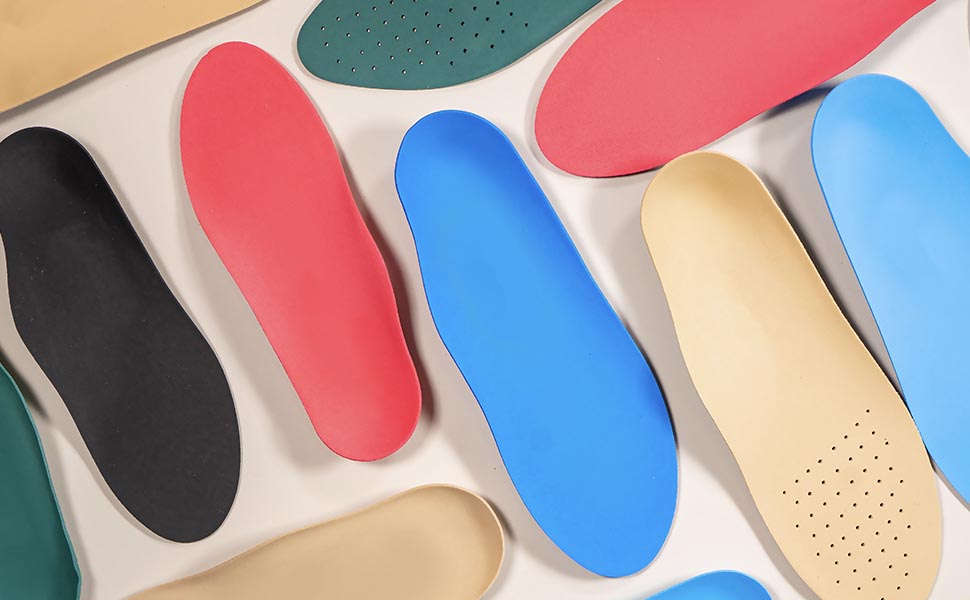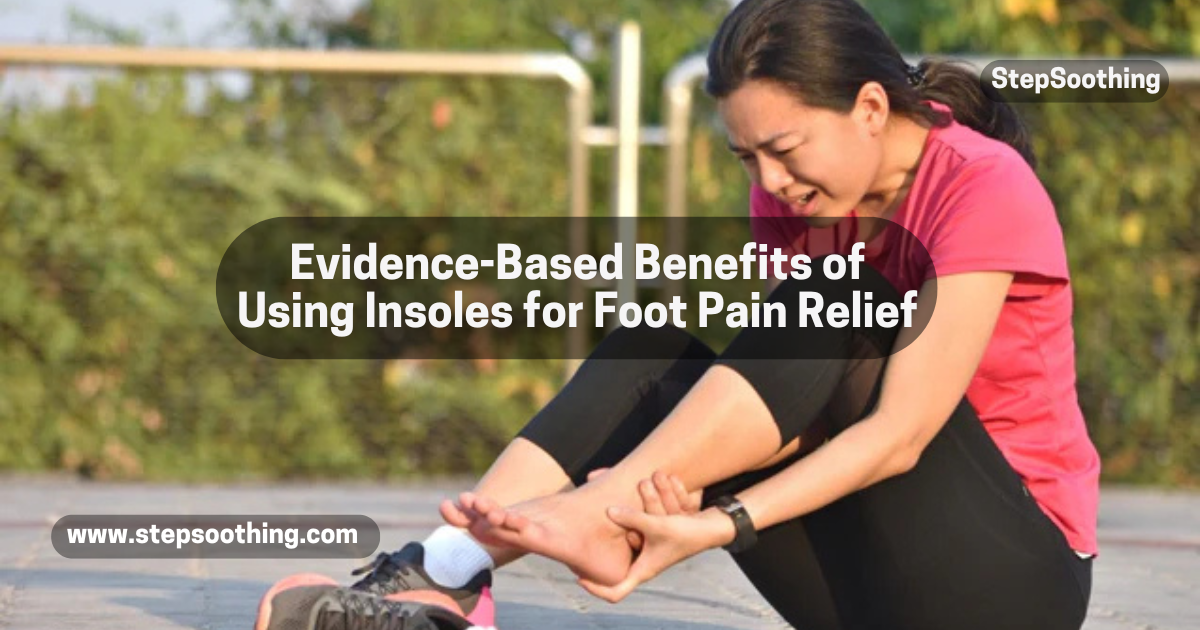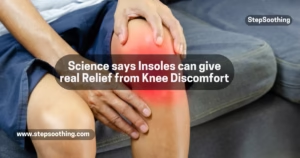Insoles are inserts placed inside your shoes to provide extra cushioning, support, or alignment for your feet. They come in various types, including over-the-counter options and custom-made orthotics designed specifically for your foot shape and needs. While many people think of insoles as just a comfort accessory, they actually offer a wide range of scientifically proven benefits that go beyond simple cushioning. From relieving pain to improving posture and even managing chronic conditions, insoles can make a significant difference in your daily life. In this article, we’ll explore the evidence-based benefits of using insoles and how they can help you live more comfortably.
Evidence-based Benefits of using Insoles

Improved Foot Support and Alignment
One of the most important roles of insoles is providing proper arch support. Your feet have three arches—medial, lateral, and transverse—that help distribute weight evenly across your body. When these arches collapse or weaken, it can lead to discomfort and long-term issues like plantar fasciitis. Research shows that insoles with arch support reduce strain on the plantar fascia, the band of tissue running along the bottom of your foot. This helps alleviate pain and prevents further damage.
Insoles also correct issues like overpronation (when your foot rolls inward too much) and supination (when your foot rolls outward). Overpronation is a common cause of knee pain, shin splints, and even lower back pain. A study published in the *Journal of Foot and Ankle Research* found that orthotic insoles significantly improved gait patterns in people with overpronation, reducing their risk of injury.
If you spend long hours standing or walking, insoles can also reduce foot fatigue by absorbing shock and redistributing pressure. For example, nurses, teachers, and retail workers often benefit from cushioned insoles that keep their feet comfortable throughout the day.
Pain Relief for Common Foot Conditions
Plantar Fasciitis:
Plantar fasciitis is one of the most common causes of heel pain, affecting millions of people worldwide. Orthotic insoles have been shown to relieve this condition by supporting the arch and reducing tension on the plantar fascia. A 2018 study in the *Journal of Orthopaedic & Sports Physical Therapy* found that patients who used custom orthotics experienced less pain and faster recovery compared to those who didn’t.
Heel Spurs:
Heel spurs are bony growths that develop on the underside of the heel bone, often causing sharp pain. Cushioned insoles can help by absorbing impact and reducing pressure on the affected area. According to the American Podiatric Medical Association (APMA), soft insoles are particularly effective for heel spur relief.
Flat Feet:
People with flat feet lack a natural arch, which can lead to pain in the feet, ankles, and knees. Custom insoles designed to mimic the arch can restore proper alignment and reduce symptoms. A clinical trial published in *Foot & Ankle International* showed that participants with flat feet reported significant improvements after using orthotic insoles for six months.
Bunions and Metatarsalgia:
Bunions and metatarsalgia (pain in the ball of the foot) can be managed with insoles that redistribute weight away from painful areas. Studies show that padded insoles not only relieve discomfort but also slow the progression of bunions.
Enhanced Joint Health and Injury Prevention
Proper foot alignment doesn’t just affect your feet—it impacts your entire body. Misaligned feet can put unnecessary stress on your knees, hips, and lower back, leading to chronic pain. For instance, a study in *Arthritis Care & Research* demonstrated that insoles reduced knee pain in patients with osteoarthritis by improving their walking mechanics.
Insoles also play a crucial role in preventing injuries, especially for athletes. Shock-absorbing insoles minimize the impact of high-impact activities like running or jumping, reducing the risk of stress fractures and tendonitis. Additionally, they enhance balance and stability, which is essential for sports performance.
Performance Enhancement for Athletes
Athletes often rely on insoles to boost their performance. High-quality insoles improve energy return, allowing athletes to run faster and jump higher without expending extra effort. They also reduce muscle fatigue, enabling longer training sessions.
For example, a study conducted by the *British Journal of Sports Medicine* found that runners who wore specialized insoles experienced less fatigue and better endurance during marathons. Moreover, moisture-wicking insoles prevent blisters and friction-related injuries, keeping athletes comfortable during intense workouts.
Management of Medical Conditions
Diabetes and Neuropathy:
Diabetic foot care is critical because nerve damage (neuropathy) can lead to ulcers and infections. Diabetic insoles are designed to reduce pressure points and improve circulation, lowering the risk of complications. The APMA recommends diabetic insoles as part of a comprehensive foot care plan.
Arthritis:
Cushioned insoles can ease the discomfort caused by arthritis by reducing joint inflammation. A study in *Rheumatology International* showed that participants with rheumatoid arthritis experienced less pain and improved mobility after using supportive insoles.
Pregnancy-Related Foot Problems:
During pregnancy, hormonal changes can cause ligaments in the feet to loosen, leading to flat feet and swelling. Insoles designed for pregnant women provide additional support and cushioning, making it easier to stay active.
Psychological and Lifestyle Benefits
Beyond physical health, insoles can improve your mental well-being. Chronic foot pain can limit your ability to exercise, work, or socialize, leading to frustration and low self-esteem. By alleviating discomfort, insoles empower you to engage in activities you love, boosting confidence and overall happiness.
Additionally, investing in quality insoles can save money in the long run by preventing costly treatments for more severe foot problems.
Choosing the Right Insoles
When selecting insoles, consider your specific needs:
Activity Level: Runners need shock-absorbing insoles, while office workers may prefer lightweight, breathable options.
Foot Type: People with high arches benefit from cushioned insoles, while those with flat feet require arch support.
Custom vs. Over-the-Counter: Custom orthotics are ideal for complex issues, but over-the-counter insoles work well for general support.
To ensure a proper fit, remove the existing insole from your shoe and replace it with the new one. Make sure there’s no bunching or slipping.
Conclusion
Insoles are more than just a comfort accessory—they’re a tool for improving your overall health and quality of life. Whether you’re dealing with foot pain, managing a medical condition, or looking to enhance athletic performance, insoles offer evidence-based solutions tailored to your needs. Ready to experience the transformative benefits of insoles? Consult a podiatrist today or shop for high-quality options online.
References
Journal of Foot and Ankle Research: “The Effectiveness of Orthotic Insoles in Correcting Overpronation.“
Journal of Orthopaedic & Sports Physical Therapy: “Orthotic Interventions for Plantar Fasciitis.”
Arthritis Care & Research: “Impact of Insoles on Knee Pain in Osteoarthritis Patients.“
British Journal of Sports Medicine: “Role of Insoles in Athletic Performance Enhancement.”
American Podiatric Medical Association (APMA): “Diabetic Foot Care Guidelines.”
Rheumatology International: “Use of Insoles in Managing Rheumatoid Arthritis Symptoms.”



